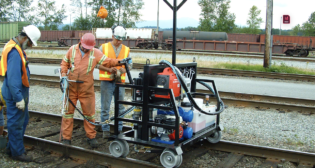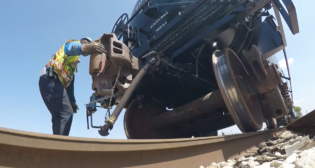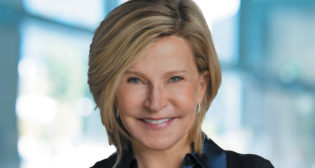
Maximize Your Assets
Written by Marybeth Luczak, Executive Editor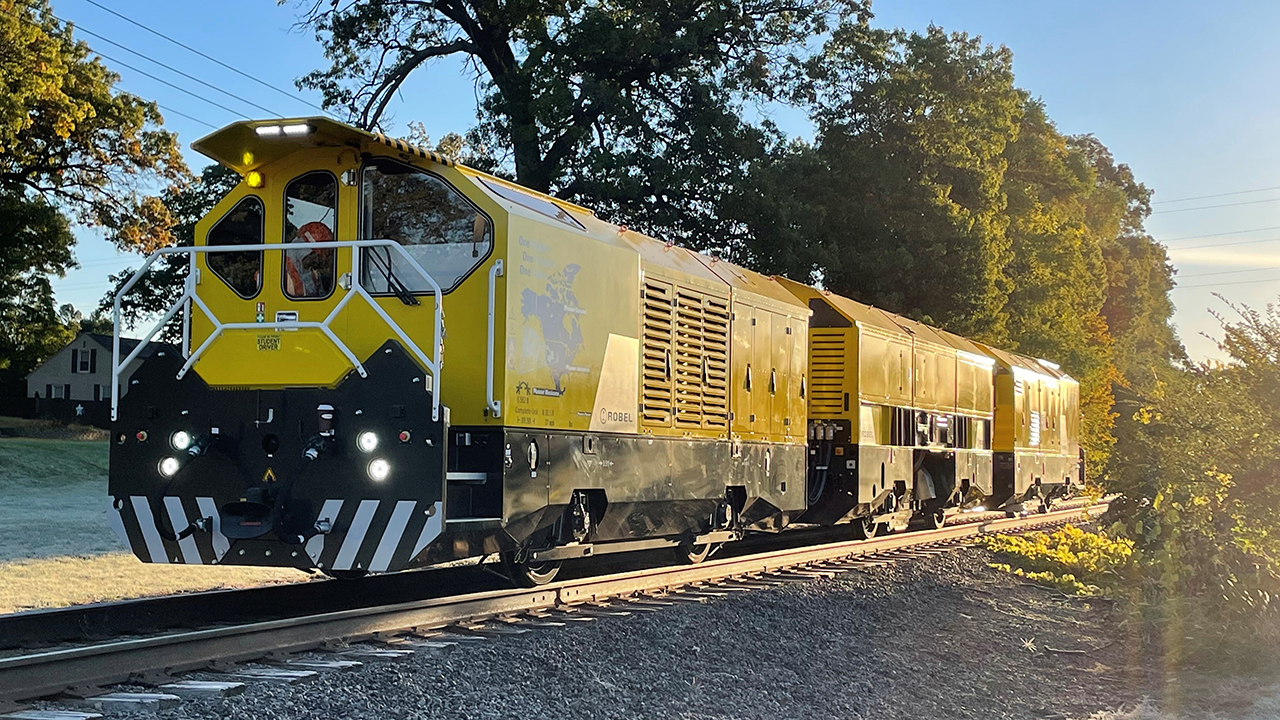
Plasser American ROMILL URBAN 3 E3 hybrid rail milling machine. (Plasser American Photograph)
RAILWAY AGE, MAY 2023 ISSUE: The newest milling, grinding and welding technologies and services help to extend rail life, and reduce noise.
Steel rail is the industry’s foundation, making its maintenance a top priority for freight and passenger railroads alike. Railway Age contacted leading suppliers and service providers to find out about the latest rail milling, grinding and welding offerings that efficiently, cost effectively and safely do the job as well as their market insights.
Vossloh North America
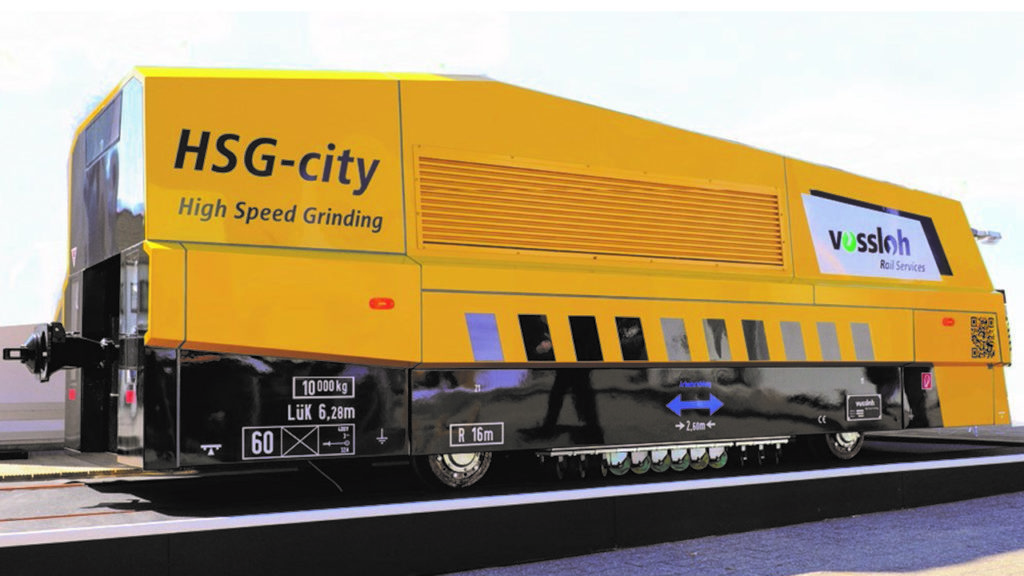
“As the cost for raw materials and labor continues to increase, railways are looking at opportunities to extend the life of their assets, and, through novel approaches, to preventative maintenance,” Vossloh reports. “On top of that, every network operator strives to keep its network as efficient as possible.” Key to that is planning. “A preventive maintenance approach is the best chance to delay corrective, time-consuming interventions,” the m/w machine manufacturer points out. “Instead of aggressively grinding and reprofiling the rail when it needs to be, the rail would be ground more frequently, but with lower removals per cycle. The idea behind that is to remove rolling contact fatigue and corrugation at an early stage. This approach can be done at a significantly higher speed and lower cost to the customer, creating efficiencies and avoiding costly work blocks to get the job done.”
Vossloh says it’s incorporating more technology into its products to provide real-time feedback on the state of customer rail assets. “This gives the customer an overall view of the health of their network and allows them to monitor how it changes over time,” the company explains. “Given the data and understanding the track’s condition, it is possible to change from a preventive to a predictive maintenance approach, enabling the implementation of a long-term maintenance strategy.”
Vossloh tells Railway Age it is bringing its HSG-city rail grinding and measuring machines from Europe to North America. Their mapl-e software provides data on the state of the rails minutes after measuring has been conducted, the company says, allowing for significantly reduced lead times from measuring to evaluation to action.
Harsco Rail
“Overall, the rail grinding market is strong,” reports Dereck Bartz, Global Product Manager for the rail treatment portfolio. On the freight side, rail grinding is critical for profiling and life extension, particularly through curves and switches, he says; on the transit side, it is driven predominantly by noise and vibration elimination and surface defect removal.
The company recently introduced a new model of its “Hercules” production grinder. Saudi Arabia Railway (SAR) will receive a 60-stone version and the India market will receive four 20-stone versions, the first of which is due to ship in the next couple of months.
The new model includes an approximately 35-hp grinding motor, one of the most powerful in the industry, according to Bartz. It is liquid- rather than air-cooled, which he says extends motor life, and uses steel bearings instead of roller bearings.
Harsco is also delivering two TG-8s to BC Transit in Vancouver; they will run together as a 16-stone grinder controlled by one operator.
The company’s most popular transit/switch grinder is the C model—used in North America by Los Angeles Metro and by RailWorks for freight work, Bartz tells Railway Age. The machine’s control system has been upgraded to make it more user-friendly, aiding in operations and in troubleshooting with self-diagnostics.
What’s new in R&D? Harsco’s efforts center around equipment flexibility “to satisfy a customer’s needs from the time they lay out new rail and they need to grind the mill scale, throughout the life of that rail,” Bartz says. “This includes different grinding techniques and scenarios, including measuring and planning equipment, to maintain the rail profile and eliminate surface defects by removing the smallest amount of metal needed, so the customer gets the longest extension of rail life.”
Holland LP
Holland LP is not only a flash-butt rail welding and track measurement provider with mobile, fixed and portable plant offerings, but also a provider of crane rail, thermite, laser and electric welding for Class I, short line and transit rail customers. Additionally, it manufactures rail welding equipment as well as track testing and specialty vehicles.
“It’s been a busy year out of the gate,” EVP of Business Development Russ Gehl tells Railway Age. “There’s demand in the marketplace with railroads not having enough people to do the work, so there are a lot of additional requests for flash-butt welding.”
Holland is investing in improvements to boost welding speed and in process efficiencies, which are expected to help drive down costs, according to Gehl. The company is also refining its short plug welding method that is said to provide railroads with higher-quality and more cost-effective defect remediation and repair. Traditionally, repair welding gangs have relied on a 20-foot-to-40-foot plug with three pieces of equipment as well as six to eight railroad employees and two Holland employees to do the job, according to the company. With Holland’s short plug flash-butt repair welding gang, five-foot plugs are used with two pieces of equipment and a total of four (railroad and Holland) employees.
Among other projects, the company is building out its HAMR™ (Holland Automated Manganese Refurbishment) fleet to help railroads extend frog and diamond-insert life, and is expanding weld program work internationally, which includes Tren Maya in Mexico.
Gehl tells Railway Age that Holland is wrapping up work for Brightline, which is extending its Miami-to-West Palm Beach intercity passenger rail line 170 miles north to Orlando, and “is anxiously awaiting Brightline West,” a planned 218-mile high-speed rail system connecting Las Vegas and Southern California.
Loram Maintenance of Way, Inc.
“Customers are continuing to look for ways to maintain rail health,” reports Chris Lidberg, Product Manager-Rail at Loram, which offers rail grinding, ballast cleaning, friction management, material handling, track inspection technologies, and structural monitoring services. And that’s dependent on data collection, he points out. Earlier this year, the company acquired Sentient Science’s rail business unit, which includes digital twins and economic model products used to extend rail life and realize savings from track maintenance practices. Loram is currently working to expand those models to include specialty assets, Lidberg tells Railway Age.
In May, the company will roll out Loram VR (Virtual Rail), which Lidberg says will use a railroad’s inspection data to develop a properly designed grinding program.
With track occupancy at a premium, Loram continues to maximize the time spent grinding (for general reprofiling work and to reduce noise) and milling (for heavy corrective work), Lidberg says. It is also working to improve grinding by developing new stone technologies.
Last September, the company announced a strategic alliance with Linsinger Maschinenbau Gmbh in which Loram will provide Linsinger technology to North American customers. It now owns the Linsinger MG11 Hydrogen, a zero-emission rail milling machine, which will arrive in America this summer and enter service in late 2023, Lidberg says. According to the companies, the MG11 Hydrogen is said to remove a maximum of 1 mm of material on the rail surface/3 mm on the running edge in one pass, and it offers lower heat emission than a combustible engine.
Orgo-Thermit Inc., a Goldschmidt Company
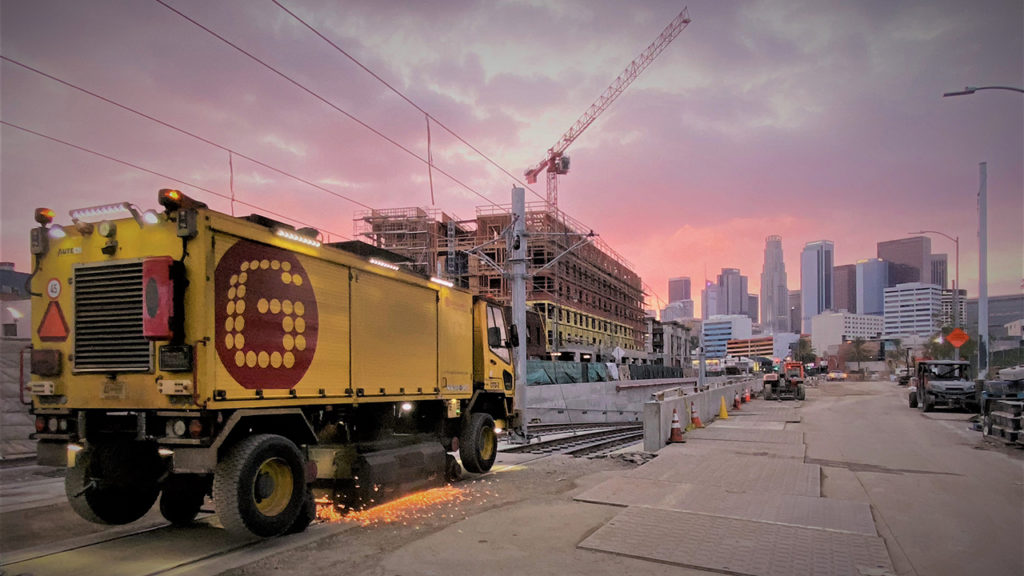
Orgo-Thermit manufactures and supplies Thermit® rail welding materials and offers OT grinding service. According to Michael Madden, President of North American Operations, rail grinding quote requests are up. What customers are looking for is a “solution provider, someone who is going to come in, with knowledge and experience, to help solve problems and maintain their key asset, not just perform grinding,” he tells Railway Age. Orgo-Thermit has an eddy current service, which allows it to perform measurements of up to three millimeters below the rail surface, to better understand rail condition. The data helps customers develop a customized grinding program. “This is new technology to North America,” Madden reports. “There’s been a lot of interest, and we expect that to continue to grow.”
On the welding side, Madden says the company continues to gather customer feedback for improvements and is looking at ways to increase efficiency. With more federal funding on the table in the U.S., it expects to see transit agency/passenger railroad construction projects coming on line in the future, to which it can supply welding kits.
Orgo-Thermit has a team in the U.S., Canada and Mexico providing technical sales and support services and training and qualification for rail welding and contractor personnel. It was recently qualified on a new American Welding Society standard for thermite welds. “We want to stay ahead to ensure that we can support our customers and make sure they perform quality welds in the field,” Madden says.
Pandrol
“The key to the welding market is to increase the speed of production while providing a more consistent and easier to install product,” says James Martin, Vice President Sales and Marketing for Pandrol, which offers an array of railway welding tools and services. “Thermite welding is contingent on well-trained personnel. Like most industries, we are struggling to keep up with demand for more crews.”
The company continues to evolve its product line to meet industry needs and is introducing a multi-use kit that Martin says, “should help with inventory levels for our customers and still provide a quality weld.”
Plasser American
In North America, rail milling is gaining market share as a complementary technology to rail grinding, according to Richard Stock, Global Head of Rail Solutions for Plasser American, which in fourth-quarter 2022 debuted what Stock calls the “first hybrid rail milling machine” in the U.S. The ROMILL URBAN 3 E3 “can operate on battery without any emissions for up to three hours,” Stock tells Railway Age. “This provides a huge advantage in emission-sensitive environments like tunnels. In addition, working on battery significantly reduces the noise during milling operations, which is another benefit in urban areas. The machine can be recharged externally—enabling it to operate ‘CO2 neutral’ if green electricity out of hydro, solar or wind power is available—or can be quick charged through the integrated tier 4 final diesel generator.”
Stock notes that the “integrated measurement technology provides longitudinal and transversal profile information as well as surface damage characterization through eddy current technology.” In regenerative or corrective application scenarios especially, he says, “rail milling can prevent premature rail exchange, thereby providing significant cost-saving opportunities.”
The ROMILL URBAN 3 E3 was first used on a U.S. transit system, according to Stock, “where it focused on removing heavy rail defects like squats and shells in areas where rail grinding could not economically remove them.” This year, Plasser American has several planned milling campaigns with a similar focus on high-damage areas.
The company is focusing on improving the machine with supplier ROBEL, says Stock.
RailWorks Maintenance of Way
“Today, there is an increased focus on the overall safety and stability of the track structure, which should continue to increase the need for more flash-butt and thermite welding as well as grinding and other services we provide, including geometry,” R.T. Swindall, Director of Sales, tells Railway Age.
With year-over-year growth in flash-butt welding, RailWorks continues to grow its fleet and its Canadian presence, according to Jacob Alexander, Director of Operations Flash-Butt Welding. The reason for the growth, he says, is “the failure rate is much lower” for this type of weld and more work can be performed safely in tighter track windows. “In the end you have a better product, and big picture, it raises track speeds and keeps revenue trains moving.”
Alexander reports that RailWorks continues to partner with rail suppliers “to make sure we’re providing the best program for the chemistry of the rail,” and with customers to improve equipment. It is now working to provide remote diagnostics.
The company is seeing increased grinding business, he says. Class IIs in particular are more often asking for pre-grinding inspections to help determine the right grinding plan.
